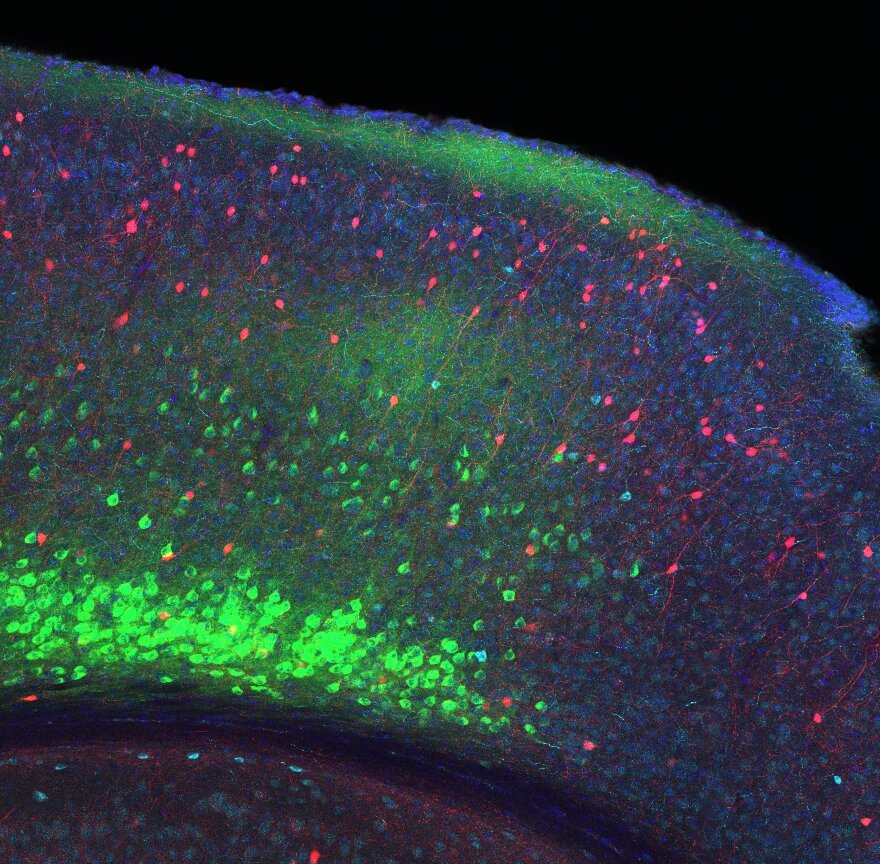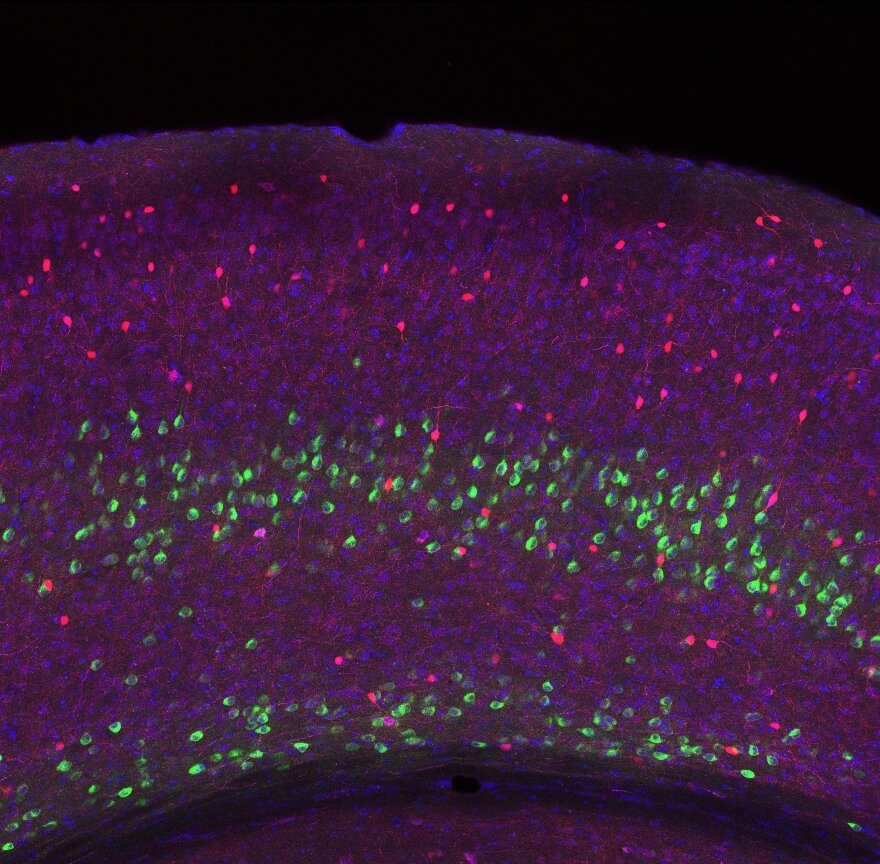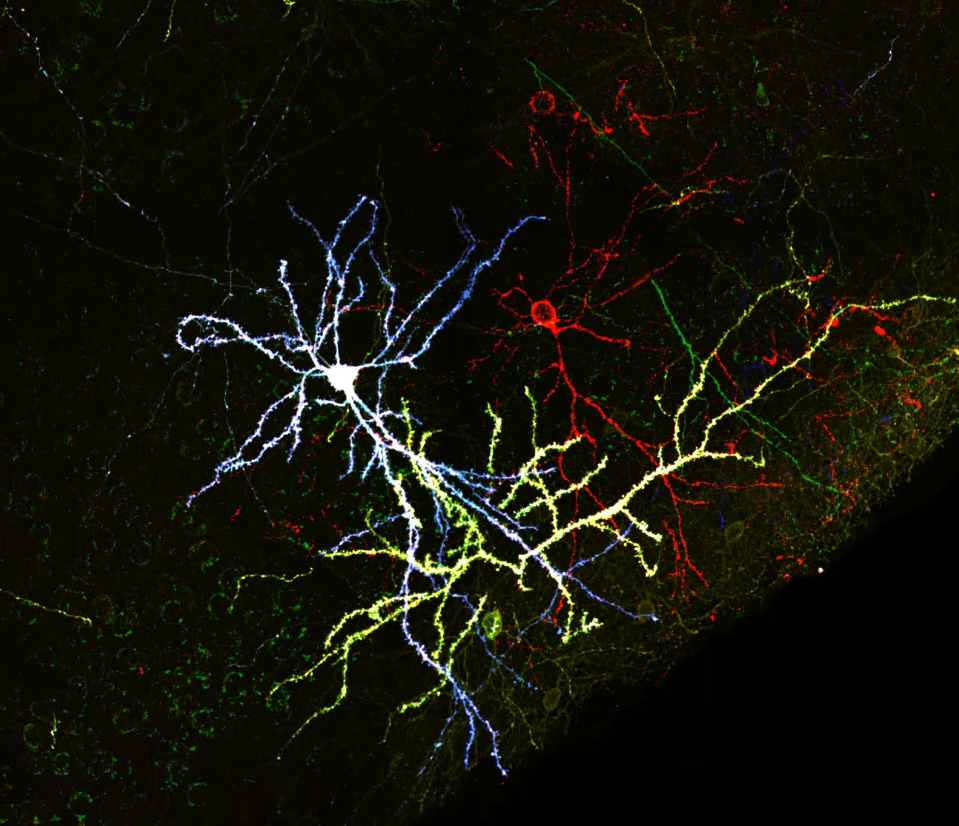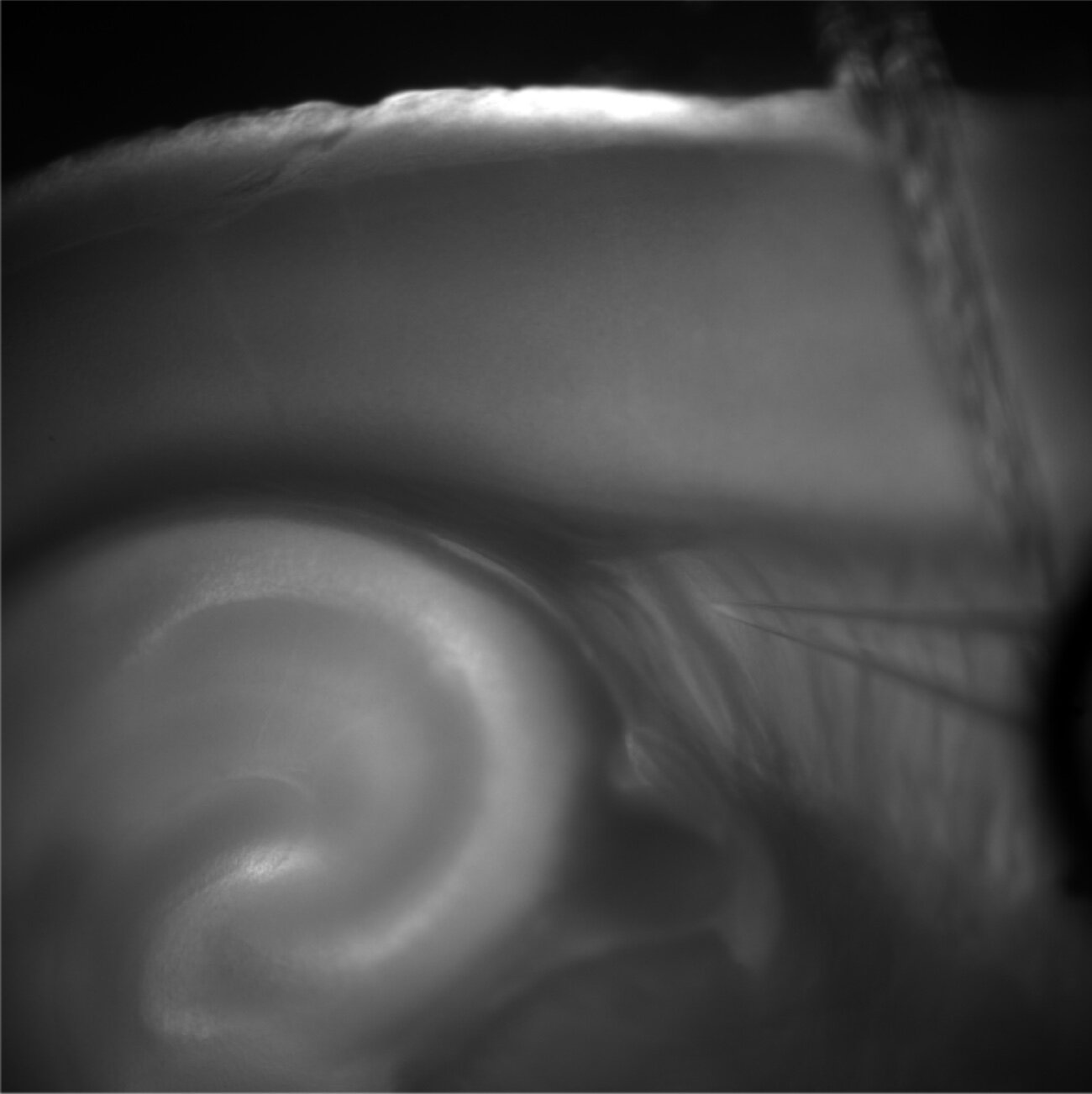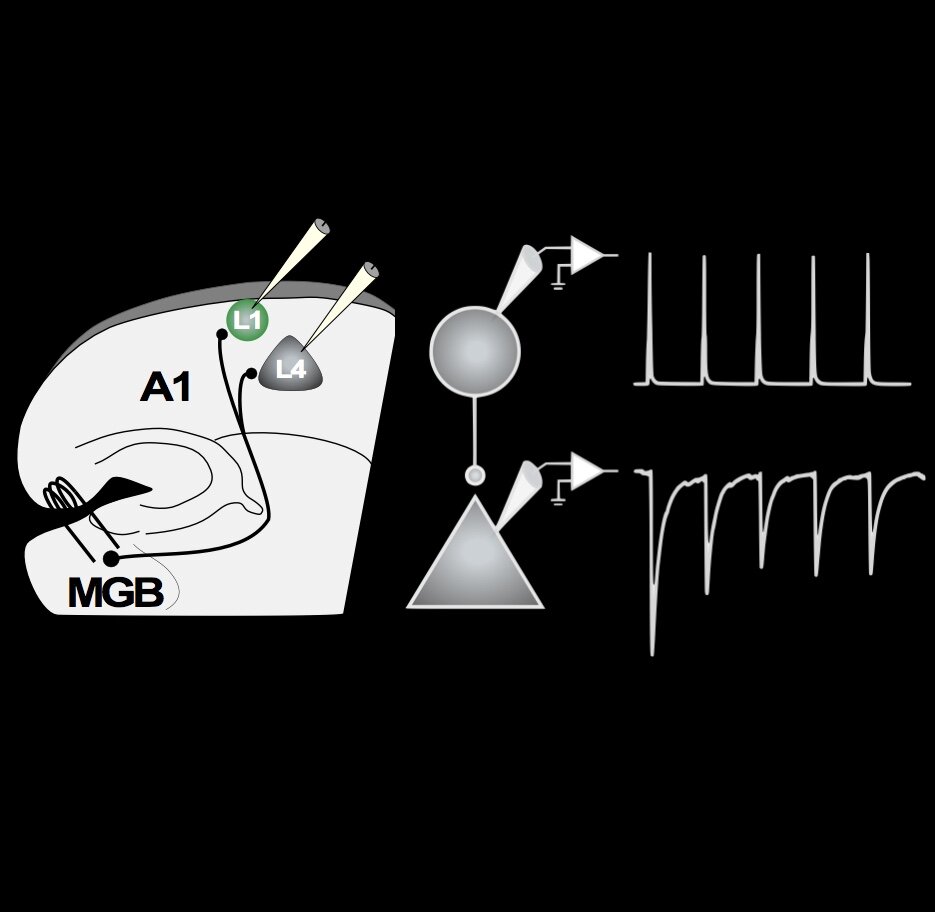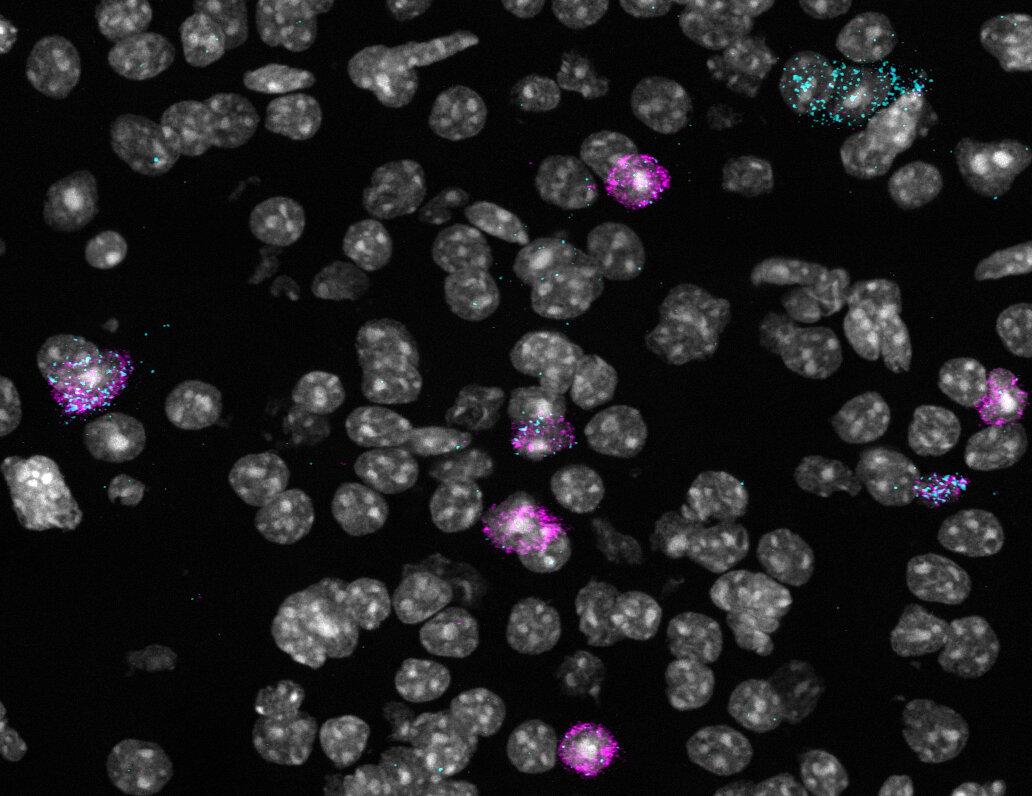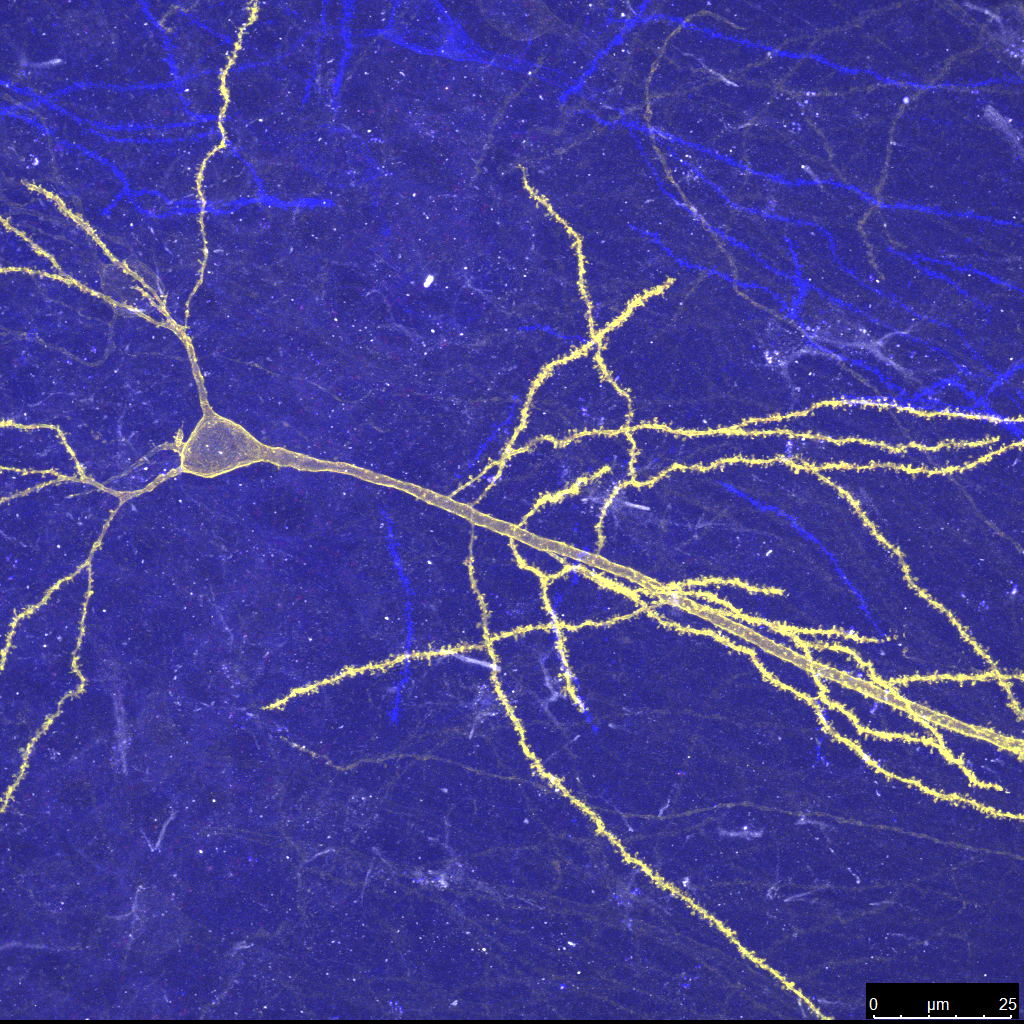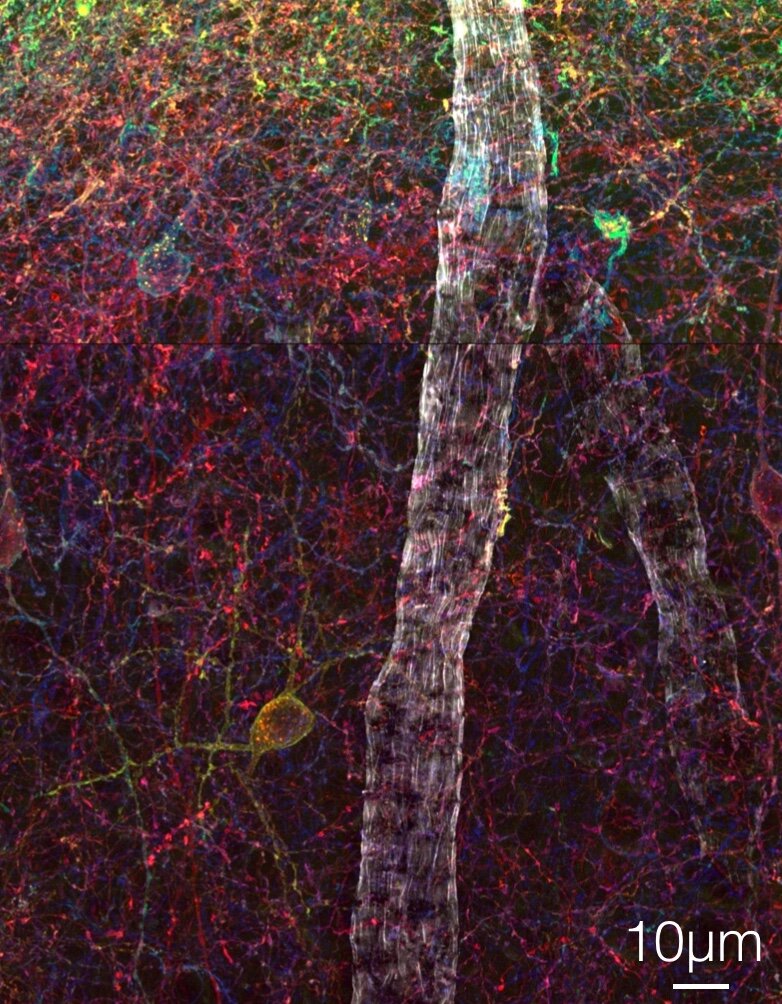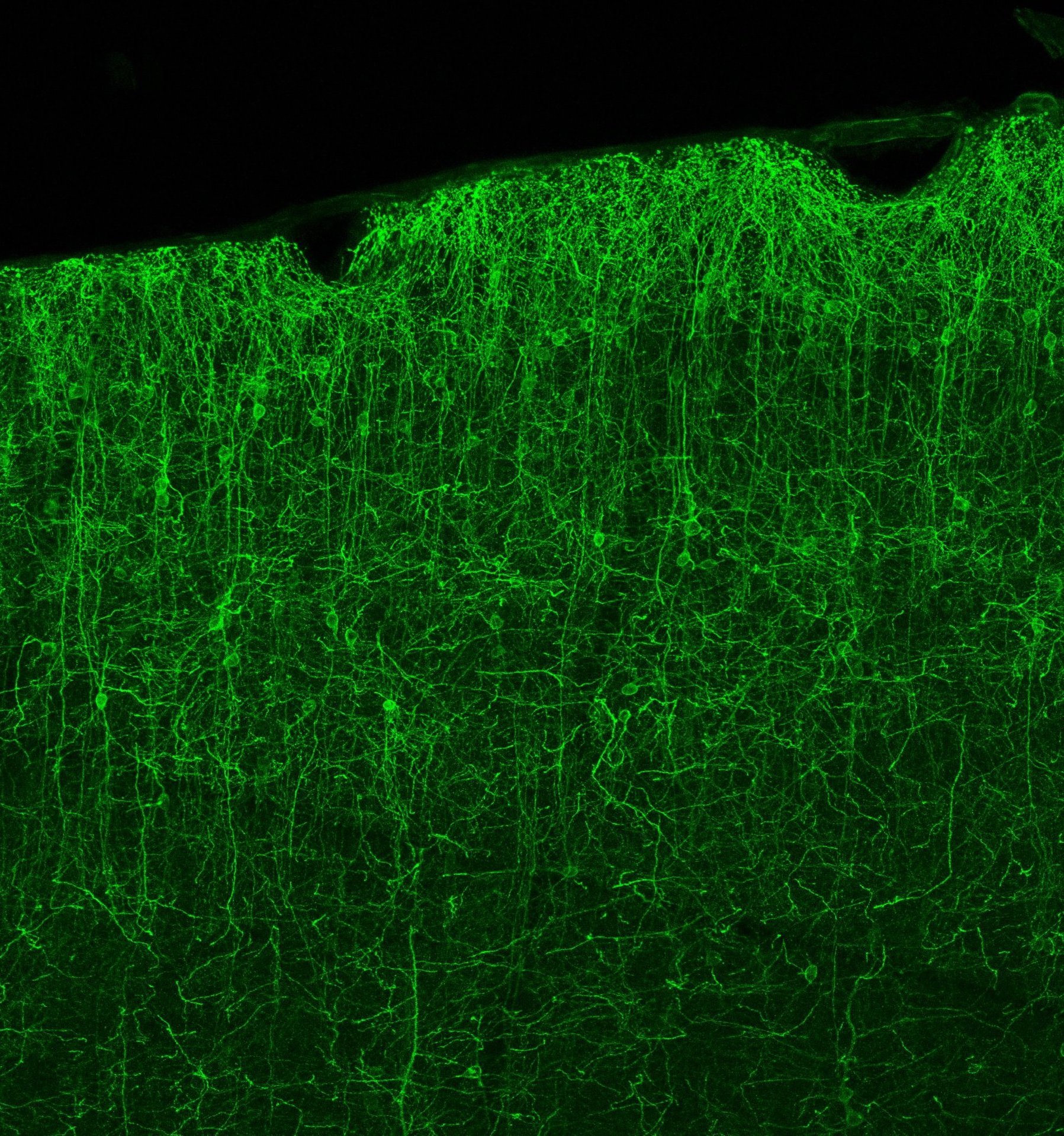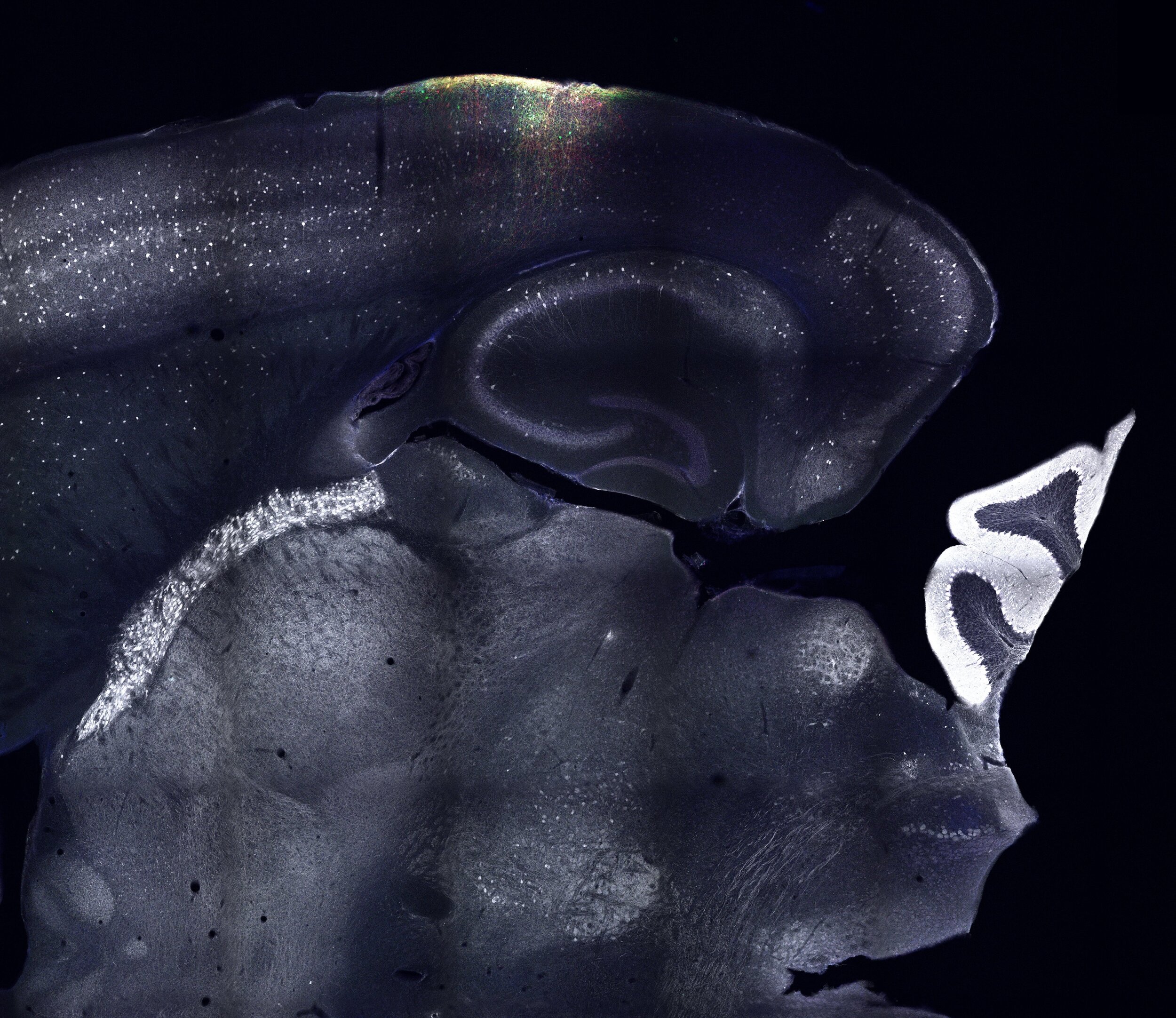AUDITORY CIRCUITRY
We study the function and organization of neuronal circuits within auditory cortex.
Our laboratory investigates the neuronal circuits in the primary auditory cortex (A1) that are central for perceiving sounds. The coordinated activity of A1 neurons extracts the spectrotemporal structure of sounds from signals arriving from the auditory thalamus. A1 is also the hub of an elaborate network of neuromodulatory and top-down projections that powerfully filters and modifies these auditory signals, acutely influencing sound perception and sound-driven behaviors. Moreover, the convergence of sensory and neuromodulatory signals can induce long-lasting changes in cortical sound responses that may underlie auditory learning. We use anatomical, electrophysiological and imaging approaches to study how these diverse inputs converge onto specific neuronal types in auditory cortex, how these neurons function within cortical circuits, and how these circuits contribute to sound perception.
Our recent work has veered us to focus on cortical layer 1 (L1), a sparse layer of inhibitory neurons located directly underneath the pial surface that has been traditionally overlooked. We and others have found that L1 interneurons are key sites of convergence for both sensory inputs from the auditory thalamus and inputs from diverse neuromodulatory regions (Takesian et al., 2018, Vattino et al., 2024; Sweeney et al., 2025). In turn, L1 interneurons send spatially-precise axonal projections to their targets that powerfully control cortical network activity and plasticity. We are working to dissect the diverse circuitry of L1 and to understand how these circuits control moment-to-moment A1 activity and its encoding of the sensory environment. For these experiments we employ sophisticated viral tracing techniques, in vitro circuit mapping using whole-cell electrophysiology in A1 thalamocortical slices, and in vivo circuit mapping using two-photon optogenetic activation and calcium imaging.
PLASTICITY OF AUDITORY CIRCUITS & LEARNING
We seek to determine how genes, environment, drugs, and behavioral states impact the brain’s ability to adapt to changes in auditory experience. We hope to identify novel ways to stimulate plasticity and reorganize neuronal circuits throughout life following neurological conditions such as traumatic brain injury, tinnitus, and neurodevelopmental disorders.
Cortical circuits are remodeled throughout life to adapt to changes in experience and the surrounding environment. This plasticity declines precipitously beyond early life, restricting the ability of adults to adjust to new environments. However, cortical plasticity can be reawakened in adulthood by neuromodulatory signals that convey information about behavioral state and outcome. Tapping into the pathways carrying these signals to cortex offers a promising avenue to enhance plasticity and facilitate recovery from brain injury, neurological disorders, or peripheral hearing loss. Our recent work has identified interneurons within cortical layer 1 (L1) as hubs where multiple neuromodulatory and sensory signals are integrated to trigger neuronal plasticity. These findings have propelled a series of new studies to determine how these cells act within cortical circuits to gate plasticity throughout the lifespan. In our laboratory, we both examine in vitro synaptic mechanisms for plasticity using whole-cell recordings and voltage imaging in thalamocortical slices and in vivo circuit mechanisms using two-photon calcium imaging in mice performing auditory tasks. Our hope is that we can identify specific neural targets to reopen windows of robust cortical plasticity beyond early life to recover auditory function following neurological disorders, injury, or peripheral hearing loss.
TINNITUS IN THE BRAIN
Our laboratory is working to uncover the genetic, cellular, and synaptic changes in the central auditory system that contribute to tinnitus — with the goal of developing therapies that harness the brain’s remarkable ability to rewire itself. By targeting neuromodulatory systems that promote plasticity, we aim to reverse the maladaptive changes that give rise to this debilitating condition.
As a member of the Lauer Tinnitus Research Center, our team collaborates closely with both research and clinical colleagues to identify the neural mechanisms that drive hyperexcitability in the brain following hearing loss. This hyperexcitability is thought to underlie a spectrum of distressing neurological symptoms, including hyperacusis (heightened sensitivity to everyday sounds) and tinnitus (the persistent perception of ringing or buzzing in the absence of sound).
Our close collaborators in the Polley Laboratory have shown that noise-induced damage to the cochlea triggers abnormal hyperexcitability and excessive synchrony among the principal excitatory neurons of the auditory cortex (McGill et al., 2022, eLife). Remarkably, their work demonstrated that a single 16-minute bout of targeted stimulation of a specific inhibitory neuron subtype — parvalbumin (PV)-expressing interneurons — can persistenly suppress this hyperexcitability and restore normal auditory processing.
Building on these findings, our laboratory is using transcriptomic analyses, in vitro two-photon imaging, and whole-cell electrophysiology to dissect the underlying cellular and circuit mechanisms. By identifying precise targets for intervention, we aim to advance the development of novel, brain-directed therapies to alleviate the devastating impact of tinnitus on patients’ lives.
DEVELOPMENT OF AUDITORY CIRCUITS & NEURODEVELOPMENTAL DISORDERS
We aim to determine the precise changes that occur in cortical circuits in response to altered sensory experience during development, and examine how these changes impact perception. We also study how early alterations in sensory circuits may underlie neurodevelopmental disorders.
The developing brain dramatically rewires in response to the external world during early ‘critical periods’, but this capacity diminishes with adulthood. A clear advantage of time-limited critical periods is that the developing brain circuits are assembled to represent the relevant aspects of our environment. However, a potential danger is that an impoverished or distorted early environment can lead to pathological circuitry that has long-term consequences for brain function. Our research aims to illuminate how sensory experience during development establishes the circuit foundation that dictates adult perception. Such effects may give rise to individual diversity in processing and learning as well as contribute to perturbations of these processes in neuro-developmental disorders.
Our ongoing studies are focused on understanding sensory disorders in autism spectrum disorder (ASD). Sensory abnormalities are a common feature of ASD, occurring in as many as 95% of children with ASD. Perturbations in circuits within the developing auditory cortex may be particularly insidious, underlying the impaired sound processing that may contribute to later language and learning deficits. These alterations may also contribute to the auditory perceptual hyper-sensitivity that often afflicts individuals with ASD. However, surprisingly little is known about the neurobiological underpinnings of the auditory sensory symptoms of ASD. We are working to identify specific synaptic and cellular deficits within auditory cortical circuits that may provide both early biomarkers of ASD and precise cellular targets for intervention. We aim to harness the brain’s inherent plasticity mechanisms to reopen windows of cortical plasticity beyond early life and to reverse the sequelae underlying long-term deficits in auditory processing and learning in ASD.



